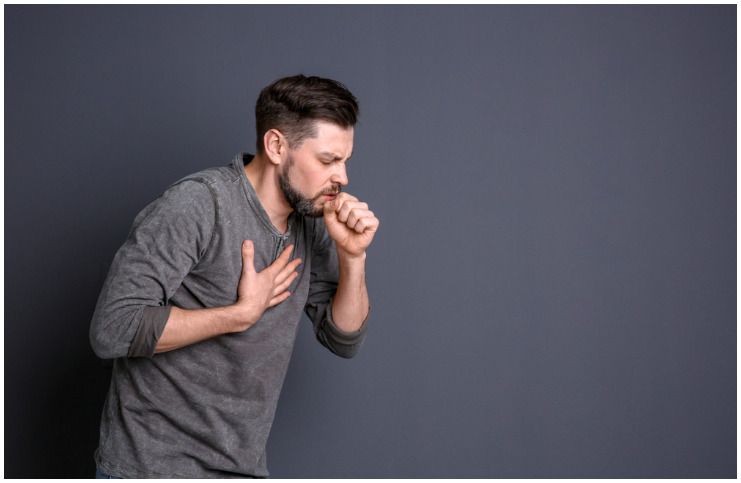Here is a list of the top 20 interesting facts about pneumonia:
#1 It is an infection in one or both of the lungs which causes tiny sacs inside the lungs to become filled with fluid and pus and inflamed. Many organisms, including viruses, bacteria, and fungi, can cause this condition.
#2 It can be a serious problem, especially for young children, babies, people with pre-existing health problems, and people older than 65 years of age.
#3 It is estimated that approximately 900,000 people in the United States get this lung condition per year and 5 to 7 percent die from it.
#4 In 2015, this condition accounted for about 16 percent of all deaths in children under 5 years old, killing 920,136 children. For every child which dies from this lung condition in the western world, approximately 2,000 more die in developing countries.
Types
#5 Fungal pneumonia – it is the primary infectious cause of death in developed countries. This can result from a condition, like – valley fever, a fungal infection caused by the Coccidioides fungus. It commonly happens in travelers or residents to endemic areas, in which case it is frequently mild, however, in people with impaired immunity (such as HIV patients or individuals taking cancer drugs) it can be life-threatening.
#6 Mycoplasma pneumonia – this type is also known as walking pneumonia (since patients feel well enough to move around) and is caused because of a bacterium – Mycoplasma pneumoniae. It is usually a mild form and may affect all age groups. Symptoms and signs commonly start 2-3 weeks after an individual is exposed to mycoplasma and slowly worsen over the following 3 days.
#7 Bacterial pneumonia (BP) – this type affects over 900,000 people (adults and children) in the US per year. BP usually affects just one lobe of a lung. Children with BP generally don’t want to eat and seem very ill. Other symptoms include – rapid breathing, high fever, and coughing.
#8 Viral pneumonia (VP) – it is caused by many types of viruses, including influenza, and is responsible for about 66 percent of all cases. VP is not serious and commonly lasts for a shorter time than BP.
#9 Hospital-acquired pneumonia – this type is also known as nosocomial pneumonia and is contracted by an individual in a hospital, 48–72 hours after being admitted. The use of a mechanical ventilator is the primary risk factor for the development of this lung condition.
#10 Aspiration pneumonia (AP) – this type usually occurs when irritants or liquids are inhaled into the lungs. Also, people with brain injury, an altered level of consciousness, swallowing difficulty, or intoxication, have a high risk of developing AP.
Symptoms
#11 The symptoms of this condition can develop suddenly over 1-2 days, or they may occur after a week. Symptoms include:
- cough (may produce thick mucus or can be dry);
- high fever (especially in babies, small children, and people with other medical conditions);
- chills;
- wheezing;
- sharp chest pains (usually caused by inflammation of the membrane which lines the lungs);
- rapid breathing;
- a general feeling of weakness;
- loss of appetite;
- disorientation and confusion (particularly in older people);
- more severe cases may also cause – low blood pressure and cough up blood.
Causes
#12 This condition is usually caused by bacteria, viruses, or fungi. This condition most often occurs in:
- individuals with other health conditions, like – cystic fibrosis, asthma, kidney disease, liver problems, or heart disease;
- smokers;
- people who have been recently hospitalized in an intensive care unit;
- people with weakened immune systems (due to HIV, AIDS, or cancer);
- very young children;
- seniors.
Treatment
#13 There are many types of this lung condition, and all of them, if left untreated, can be life-threatening. Treatment also depends on how severe the symptoms are, overall health, and age.
#14 The healthcare professional will usually prescribe you antibiotics. It is essential to finish the course your healthcare professional prescribes, even when you start feeling better.
#15 For VP, antibiotics are ineffective and should not be used. However, home treatment, like – rest and taking care of the main symptoms (like the cough), generally is all that is done.
Prevention
Keeping Your Home Warm
#16 Heating the home to at least 65°F (18ºC) in winter is especially important if you have small children or you are 65 and over.
Avoid Alcoholic Beverages
#17 Alcohol abuse can increase the risk of AP. According to a study, men who drank more than 50 drinks per week are approximately 80% more likely to go to the hospital for this lung condition than those who don’t drink.
Don’t Smoke Tobacco Or Stop Smoking
#18 Stop smoking cigarettes and ensure a smoke-free household since it damages the tiny hairs in the lungs which help remove bacteria and germs.
Handwashing
#19 Wash your hands regularly, particularly after going to the bathroom, blowing the nose, before eating, diapering, or preparing foods.
Diet
#20 Eat plenty of organic fruits, nuts, seeds, vegetables, and legumes, especially carrots, lentils, romaine lettuce, chickpeas, onions, garlic, beets, cucumbers, cabbage, flaxseeds, chia seeds, sesame seeds, sunflower seeds, celery, walnuts, broccoli, almonds, cauliflower, radishes, cucumber, potatoes, sweet potatoes, Jerusalem artichokes, brown rice, corn, or red kidney beans.
Images credit – Shutterstock
READ THIS NEXT: Interesting Facts About The Musculoskeletal System
